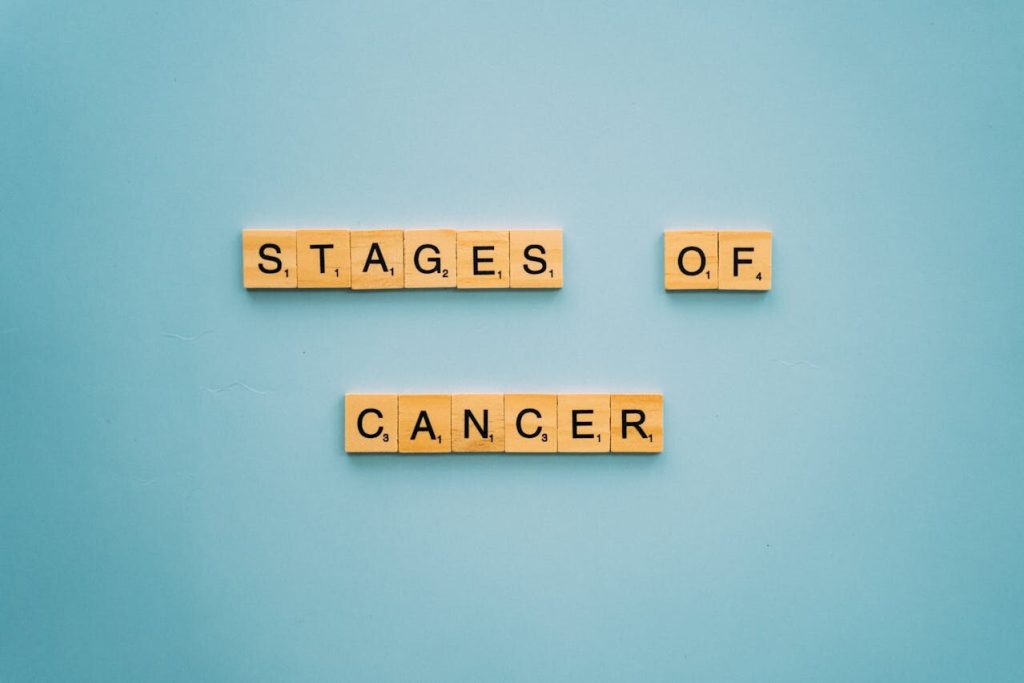Taxol, a chemotherapy medication, is known for its effectiveness in treating various types of cancer. However, like most cancer treatments, it comes with a range of potential side effects, including taxol reaction.
Understanding taxol reaction and its causes, symptoms, and management is crucial for patients undergoing taxol treatment.
Key Takeaways:
- Taxol is an effective chemotherapy drug used in cancer treatment.
- Taxol reaction is a potential side effect of taxol treatment.
- It is important to understand the causes, symptoms, and management of taxol reaction for successful cancer treatment and management of side effects.
What is Taxol?
Taxol, also known by its generic name Paclitaxel, is a chemotherapy drug used in the treatment of various types of cancer, including breast, ovarian, and lung cancer. It is derived from the bark of the Pacific yew tree and works by inhibiting cell division, ultimately leading to the death of cancer cells.
Taxol is typically administered intravenously and requires careful monitoring by healthcare professionals. It is often used in combination with other chemotherapy drugs, radiation therapy, or surgery as part of a comprehensive cancer treatment plan.
Common Side Effects of Taxol
Like all chemotherapy drugs, taxol can cause a range of side effects, some of which can be quite severe. Understanding these side effects and how to manage them is an important part of preparing for taxol treatment.
| Physical Side Effects | Psychological Side Effects |
|---|---|
|
|
Some of these side effects can be managed with over-the-counter medications or lifestyle changes, while others may require medical intervention. It is important to discuss any side effects you experience with your healthcare team, as they may be able to offer guidance and support.
Taxol Reaction: An Overview
Taxol is a chemotherapy drug that is commonly used to treat various types of cancer, including breast, ovarian, and lung cancer. Unfortunately, one of the potential side effects of taxol treatment is an allergic reaction, known as taxol reaction. This reaction can be mild or severe and may occur during or after the infusion of the drug.
Causes of Taxol Reaction
The exact cause of taxol reaction is not fully understood, but it is believed to be related to drug interactions or individual patient factors. Some patients may be more susceptible to developing an allergic reaction due to a pre-existing condition or a weakened immune system. In rare cases, a patient may have an allergy to the drug itself, which can cause a severe reaction.
In addition to an allergic reaction, there are other potential complications that may occur during taxol infusion, including skin reactions, nerve damage, and low blood pressure. The dosage and rate at which the drug is administered can also affect the likelihood of these complications.
Symptoms of Taxol Reaction
The symptoms of taxol reaction can range from mild to severe and may include:
- Swelling and itching at the injection site
- Rash or hives
- Shortness of breath or difficulty breathing
- Chest pain or tightness
- Fever or chills
- Dizziness or fainting
- Nausea or vomiting
- Low blood pressure
If any of these symptoms occur during or after taxol infusion, it is important to inform the healthcare provider immediately. Early detection and treatment can help to prevent serious complications.
Causes of Taxol Reaction
There are several potential causes of taxol reactions, which can vary from patient to patient. One of the most common causes is a drug interaction with other medications the patient may be taking. It is essential for patients to notify their healthcare provider of all medications, supplements, or herbal remedies they are taking before starting taxol treatment.
Individual patient factors can also contribute to taxol reactions. Factors such as a patient’s age, previous history of allergic reactions, and general health can increase the risk of experiencing a taxol reaction. Patients who have previously experienced severe hypersensitivity reactions to other drugs may be more likely to experience a taxol reaction.
Drug Interactions
Taxol reactions can be the result of interactions with other medications, including over-the-counter drugs and herbal remedies. Some medications that have been known to interact with taxol include erythromycin, ketoconazole, and verapamil. Patients should always speak to their healthcare provider before taking any new medication or supplement while undergoing taxol treatment.
Individual Patient Factors
Some individual patient factors that may increase the risk of taxol reactions include age, previous allergic reactions to medications, and underlying medical conditions. For example, patients with liver or kidney problems may have a higher risk of experiencing taxol reactions due to decreased drug clearance.
It is important for healthcare providers to carefully evaluate each patient’s medical history and overall health before initiating taxol treatment. Patients should inform their healthcare provider of any underlying medical conditions, allergies, or previous allergic reactions to medications to help guide treatment decisions and minimize the risk of taxol reactions.
Symptoms of Taxol Reaction
A taxol reaction is a possible side effect of taxol treatment, which can cause a variety of symptoms. These symptoms can range from mild to severe and can occur during or shortly after infusion.
The symptoms of taxol reaction can include:
- Shortness of breath or difficulty breathing
- Chest pain or tightness
- Rapid heartbeat
- High or low blood pressure
- Flushing or redness of the skin
- Itching or hives
- Swelling of the face, lips, tongue, or throat
- Nausea, vomiting, or diarrhea
- Fatigue or weakness
- Headache or dizziness
In rare cases, a taxol reaction can be life-threatening and require immediate medical attention.
“It is important for patients to report any symptoms they experience during taxol treatment to their healthcare provider, as early detection and prompt treatment can help prevent serious complications.”
If you experience any of these symptoms during taxol treatment, it is important to inform your healthcare provider immediately. They may halt treatment or administer medication to manage the symptoms.
Management and Treatment of Taxol Reaction
Early detection and prompt management of taxol reaction is crucial for ensuring a positive treatment outcome. The management of taxol reaction will depend on the severity of the symptoms and may include any of the following:
- Discontinuation of Taxol: In more severe cases, it may be necessary to discontinue taxol treatment altogether to prevent further reaction.
- Antihistamines: Antihistamines like diphenhydramine may be given to help reduce allergic reactions.
- Hydration: Hydration is an important part of managing taxol reaction as it can help flush the drug out of the body faster.
- Steroids: If the reaction is severe, steroids like dexamethasone may be administered to reduce inflammation and swelling.
- Alternative Medications: In some cases, alternative medications like paclitaxel may be used instead of taxol to prevent further reaction.
It is important to note that there are certain contraindications for using taxol as a chemotherapy drug, including liver and renal impairment, low white blood cell count, and peripheral neuropathy, among others. Patients should discuss any pre-existing medical conditions with their healthcare provider before starting taxol treatment to determine if it is safe and appropriate for them.
Preventing Taxol Reaction
While taxol reaction cannot always be prevented, there are some steps that patients can take to reduce their risk of experiencing it, including:
- Informing their healthcare provider of any pre-existing medical conditions.
- Providing a complete list of all medications, supplements, and herbs they are taking to their healthcare provider.
- Drinking plenty of fluids before, during, and after treatment to help flush the drug out of the body faster.
- Being vigilant about reporting any symptoms of an allergic reaction, such as rash, hives, or difficulty breathing, to their healthcare provider immediately.
By working closely with their healthcare provider and following recommended treatment guidelines, patients can effectively manage and minimize the risk of taxol reaction while undergoing cancer treatment.
Holistic Approaches to Cancer Care at the Cancer Center for Healing
The Cancer Center for Healing, located in Irvine, CA, takes a holistic approach towards cancer care under the guidance of Dr. Leigh Erin Connealy. This integrative oncology center offers patients a wide range of evidence-based, alternative cancer treatments that focus on strengthening the body’s natural defenses and promoting overall wellness.
The Cancer Center for Healing believes that cancer treatment should go beyond just treating the physical symptoms of the disease, but also address the emotional, spiritual, and mental factors that may be affecting a patient’s overall health. By taking a whole-person approach, the center aims to provide comprehensive cancer care that supports the body’s ability to heal itself.
At the Cancer Center for Healing, patients can expect to receive personalized treatment plans that prioritize their individual needs and preferences. The center’s holistic treatment modalities include but are not limited to:
- Acupuncture
- Nutritional counseling
- Oxygen therapy
- Chiropractic care
- Mind-body therapies such as meditation and yoga
- Herbal and natural supplements
- IV therapy
By incorporating these alternative treatments into a patient’s cancer care plan, the Cancer Center for Healing aims to promote a supportive and healing environment that addresses all aspects of a patient’s health. This approach can help alleviate some of the negative side effects associated with traditional cancer treatments, such as chemotherapy.
The Cancer Center for Healing’s team of medical professionals works closely with each patient to monitor their progress and adjust treatment plans as needed. By taking a patient-centered approach, the center strives to provide compassionate and comprehensive care that empowers patients to take an active role in their health and wellbeing.
Comprehensive Cancer Care at the Cancer Center for Healing
At the Cancer Center for Healing, patients receive comprehensive cancer care under the guidance of Dr. Leigh Erin Connealy, who takes a holistic approach to treatment. The center offers a wide range of treatment modalities that are tailored to each patient’s specific needs.
| Some of the holistic treatment modalities available at the Cancer Center for Healing include: |
|---|
| Acupuncture: Helps to alleviate symptoms of cancer and its treatment, as well as boost the immune system and reduce stress levels. |
| IV Nutrient Therapy: Provides patients with high doses of vitamins and minerals that support the immune system and enhance overall health. |
| Hyperthermia: Uses heat to kill cancer cells while minimizing damage to surrounding healthy tissue. |
| Oxygen Therapy: Enhances the body’s ability to absorb oxygen, which can help to fight cancer and improve overall health. |
These treatment modalities, along with many others offered at the Cancer Center for Healing, are used in combination with conventional cancer treatments, such as chemotherapy and radiation therapy, to provide the most effective treatment possible.
Scheduling a Consultation at the Cancer Center for Healing
If you or a loved one is seeking holistic cancer care, scheduling a consultation at the Cancer Center for Healing is an excellent first step. Under the guidance of Dr. Leigh Erin Connealy, the center offers a comprehensive range of holistic treatment options tailored to each patient’s individual needs and preferences.
To schedule a consultation, simply call the Cancer Center for Healing at (949) 680-1880 or fill out the contact form on their website. Their friendly and knowledgeable staff will be happy to assist you in scheduling an appointment that works for you.
During your consultation, you will have the opportunity to meet with Dr. Connealy or one of the center’s other experienced practitioners. They will listen to your concerns, answer any questions you may have, and work with you to develop a personalized treatment plan that addresses your unique medical history, symptoms, and goals.
Understanding Taxol Dosage and Infusion Complications
Taxol is a powerful chemotherapy drug used to treat various types of cancer, including breast, ovarian, and lung cancer. The dosage of taxol prescribed to a patient depends on their body weight, general health, and the type of cancer being treated. Too high a dosage of taxol can lead to severe side effects and complications, while a dose that is too low may not effectively fight the cancer.
The infusion process involves delivering taxol through an intravenous catheter which carries the drug directly into the bloodstream. The infusion generally takes several hours, with the patient being closely monitored for any adverse effects.
Taxol Dosage
The dosage of taxol is determined by the patient’s weight and the type of cancer being treated. The standard dose of taxol is 175 milligrams per square meter of body surface area, but the dose may vary depending on the patient’s specific condition.
A healthcare professional will calculate the appropriate dosage for each patient, taking into account factors such as age, medical history, and the presence of other health conditions. It’s crucial to follow the prescribed dosage to avoid any complications that could arise from an overdose.
Taxol Infusion Complications
The taxol infusion process can cause various complications that affect the patient’s health. These complications may include:
- Low blood pressure
- Abnormal heart rate
- Infection at the injection site
- Allergic reaction
- Neuropathy
In rare cases, taxol infusion complications may lead to hospitalization. It’s essential for healthcare providers to monitor patients during the entire infusion process and to identify any complications at an earlier stage to avoid serious consequences.
In conclusion, the dosage of taxol and infusion process can cause various complications that affect the patient’s health. It’s essential to follow the healthcare provider’s instructions and report any concerning symptoms to avoid severe side effects and complications.
Conclusion
Taxol is a powerful chemotherapy drug used in the treatment of various types of cancer. While it is an effective treatment option, it can also cause a range of side effects, including the rare but potentially life-threatening taxol reaction. It is important for patients to be informed and prepared for taxol treatment, and to understand the potential risks and benefits before making decisions about their care.
If a taxol reaction does occur, early detection and management are crucial. Patients should seek medical attention immediately if they experience symptoms such as difficulty breathing, hives, or swelling of the face, lips, or throat. Treatment options may include stopping the medication, administering medications to manage symptoms, and using alternative chemotherapy drugs.
For patients seeking a more holistic approach to cancer care, the Cancer Center for Healing offers comprehensive treatment options tailored to each individual’s unique needs. Under the guidance of Dr. Leigh Erin Connealy, their team of experts offers a range of holistic treatment modalities to support patients throughout their cancer journey.
Overall, understanding taxol dosage and potential side effects is crucial for any patient undergoing cancer treatment. By staying informed and working closely with their healthcare team, patients can make informed decisions about their care and take steps to minimize the risks associated with taxol treatment.
FAQ
Q: What is taxol?
A: Taxol is a chemotherapy drug commonly used in cancer treatment. It works by interfering with the growth of cancer cells and is often prescribed for various types of cancers.
Q: What are the common side effects of taxol?
A: The common side effects of taxol treatment may include nausea, vomiting, hair loss, fatigue, neuropathy, bone marrow suppression, and changes in taste or appetite.
Q: What is a taxol reaction?
A: Taxol reaction refers to the side effects and adverse reactions that can occur during or after taxol treatment. These reactions can range from mild to severe and require appropriate management.
Q: What causes a taxol reaction?
A: Taxol reactions can be caused by various factors, including drug interactions, individual patient factors such as allergies or hypersensitivity, and the specific dosage and administration of taxol.
Q: What are the symptoms of a taxol reaction?
A: Symptoms of a taxol reaction may include allergic reactions, hypersensitivity, difficulty breathing, chest pain, rash, swelling, fever, and chills. It is important to promptly report any unusual symptoms to a healthcare provider.
Q: How is a taxol reaction managed and treated?
A: Management and treatment of taxol reactions involve closely monitoring the patient during treatment, early detection of symptoms, administration of appropriate medications such as antihistamines or corticosteroids, and, if necessary, adjustment of the taxol dosage or consideration of alternative treatment options.
Q: What is the Cancer Center for Healing?
A: The Cancer Center for Healing is a holistic cancer care center located in Irvine, CA. Led by Dr. Leigh Erin Connealy, the center focuses on providing comprehensive, personalized treatment plans that incorporate various holistic approaches to cancer care.
Q: What holistic treatment modalities are offered at the Cancer Center for Healing?
A: The Cancer Center for Healing offers a wide range of holistic treatment modalities, including nutritional therapy, acupuncture, mind-body medicine, detoxification programs, and integrative oncology consultations. Treatment plans are tailored to each patient’s unique needs and may combine different modalities.
Q: How can I schedule a consultation at the Cancer Center for Healing?
A: To schedule a consultation at the Cancer Center for Healing, you can contact the center directly by phone or through their website. The friendly staff will assist you in setting up an appointment and provide any necessary information or guidance.
Q: What should I know about taxol dosage and infusion complications?
A: Understanding the proper taxol dosage and potential infusion complications is crucial for safe and effective treatment. Your healthcare provider will determine the appropriate dosage based on factors such as your weight, overall health, and the type of cancer being treated. Infusion complications may include allergic reactions, infusion site reactions, and other infusion-related side effects.






